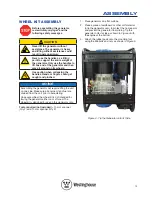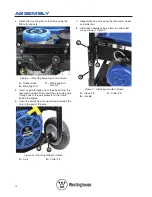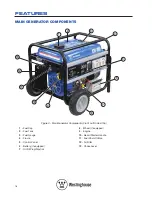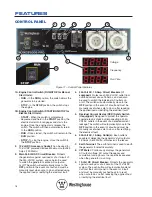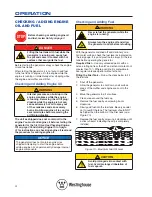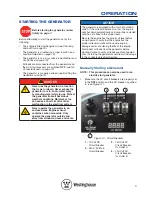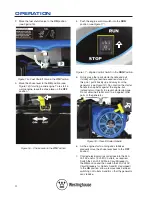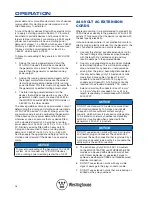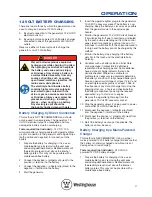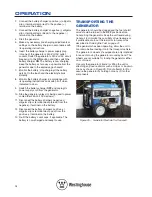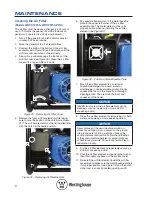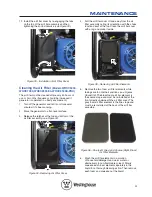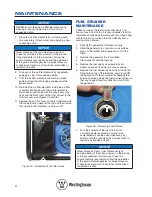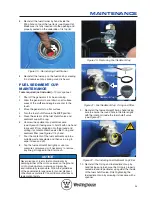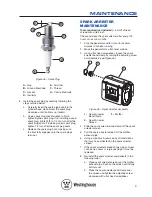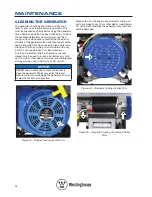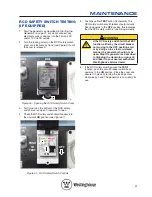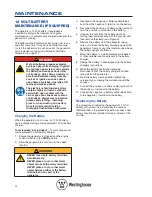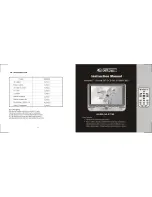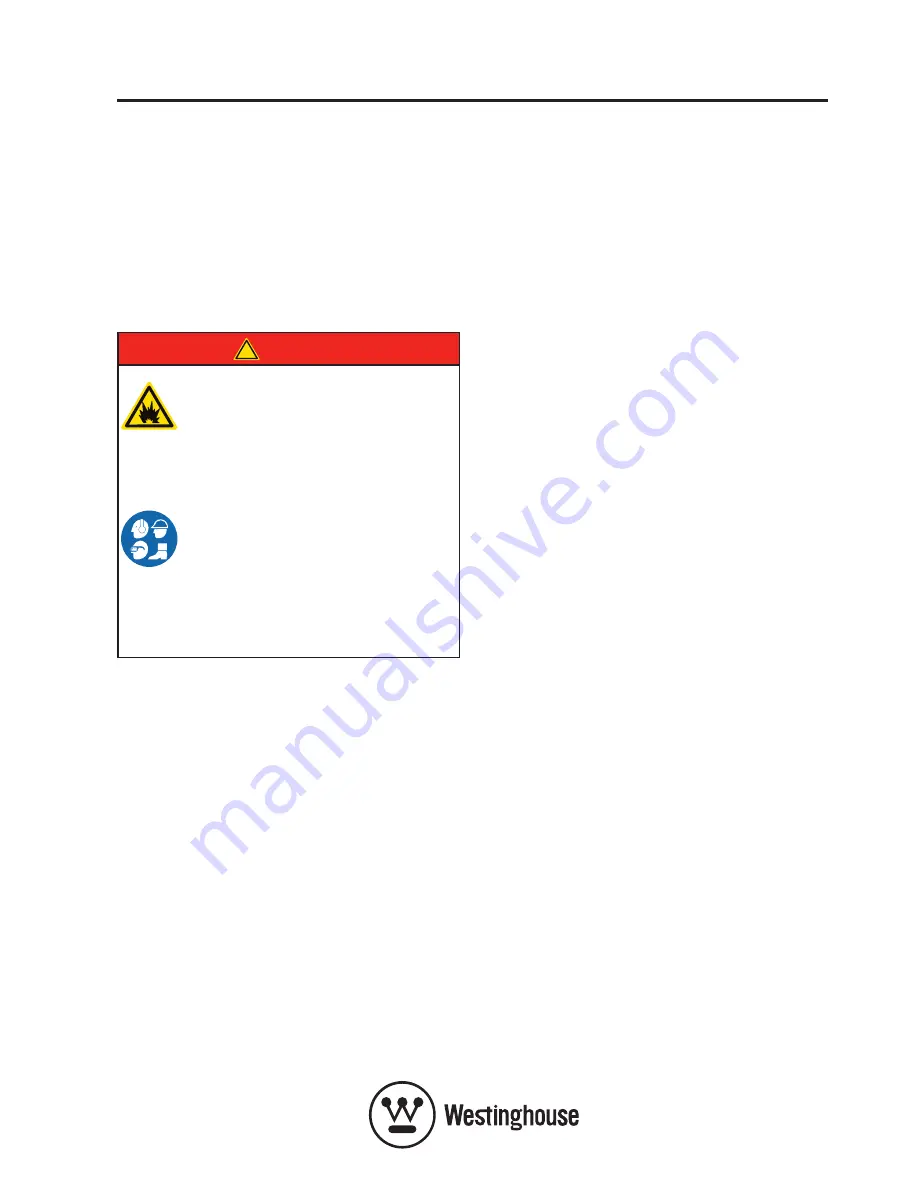
27
OPERATION
12 Volt BattErY CHarging
There are two methods by which the generator can be
used to charge an external 12 Volt battery:
A. By direct connection to the generator’s 12-Volt DC
electrical outlet; or
B. By using a mains-powered 12 Volt battery charger
connected to one of the generator’s 240-Volt AC
outlets
.
Never use either of these methods to charge the
generator’s own 12 Volt battery.
!
DANGER
Wet cell batteries produce explosive
hydrogen gas while charging. If ignited,
the hydrogen gas mixture can explode
the battery and cause serious injury
or blindness. Only charge a battery in
a well-ventilated area away from any
sources of ignition such as sparks,
open flames, matches, cigarettes, Cb
radios and mobile phones.
The electrolyte fluid inside a battery
contains highly corrosive sulphuric
acid, which upon contact with the
skin or eyes can cause severe burns
or blindness. Always wear protective
glasses and clothing – including
gloves – when working on a battery.
Any electrolyte spill should be
thoroughly flushed clean with water.
battery Charging by Direct Connection
This method is NOT RECOMMENDED and should
only be used in an emergency. The generator’s 12-
Volt DC electrical output is unregulated and may
damage the battery due to overcharging.
Tools required (not included) – 12 V DC, 10 A
minimum battery charging cable with cigarette lighter
plug for connection to the generator and alligator clips
(both positive and negative) for connection to the
battery.
1. Prepare the battery for charging if it is a user-
maintainable type by removing the vent caps
and adding demineralized or distilled water until
the electrolyte level is just above the internal
battery plates. This may not be possible with a
maintenance-free battery.
2. Connect the positive (+) alligator clip (red) to the
positive (+) terminal on the battery.
3. Connect the negative (-) alligator clip (black) to the
negative (-) terminal on the battery.
4. Start the generator.
5. Insert the cigarette lighter plug into the generator’s
12-Volt DC accessory socket. The battery is now
charging. Keep the battery as far away as possible
from the generator due to the explosive gas
hazard.
6. Monitor the generator’s 12-Volt DC circuit breaker.
If it switches itself off due to overload as indicated
by the push button extending out from the control
panel, reset it manually by pushing it back in. If it
continues to switch itself off, the current demand is
too high and the battery cannot be charged by this
method.
7. Monitor the battery; stop charging if the battery
gets hot to the touch and the electrolyte boils
violently.
8. Variables such as battery size and initial state
of charge make it impossible to definitively
recommend the charging period. Some batteries
have a state of charge indicator that can be
visually checked. Otherwise a voltmeter or
hydrometer is necessary to accurately determine
the battery’s condition. A fully charged battery will
have an open circuit voltage of at least 12.6 V and
an electrolyte specific gravity of at least 1.265. In
the absence of any state of charge tools, stop the
charging after, say, 3 hours and check whether
the battery is capable of powering the required
application, e.g. to start a car’s engine.
9. Remove the cigarette lighter plug from the
generator’s 12-Volt DC accessory socket.
10. Stop the generator unless it’s being used to power
some other 240-Volt AC device(s).
11. Disconnect the negative (-) alligator clip (black)
from the negative (-) terminal on the battery.
12. Disconnect the positive (+) alligator clip (red) from
the positive (+) terminal on the battery.
13. Re-fit the battery’s vent caps, if applicable. The
battery can now be used.
battery Charging by a Mains-Powered
Charger
This method is RECOMMENDED. Using a proper
mains-powered 12 Volt battery charger will ensure that
the battery is optimally charged and without risk of
damage due to overcharging.
Tools required (not included) – 240-Volt AC
powered 12 V DC battery charger.
1. Prepare the battery for charging if it is a user-
maintainable type by removing the vent caps
and adding demineralized or distilled water until
the electrolyte level is just above the internal
battery plates. This may not be possible with a
maintenance-free battery.
Summary of Contents for WHXC3750
Page 4: ...4...
Page 55: ...55 NOTES...

